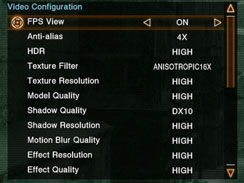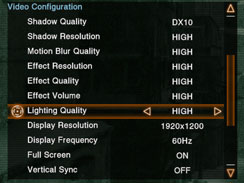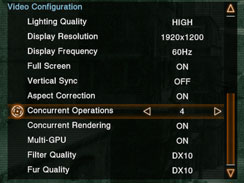Lost Planet: Extreme Condition
Publisher: CapcomLost Planet: Extreme Condition was the first game to receive DirectX 10 treatment and at the time the differences between DX9 and DX10 modes weren't that dramatic - at least, not dramatic enough to capture in a screenshot. However, the developers have been hard at work since its launch and a patch was rolled out in August that not only improved DirectX 10 performance, but also improved image quality.
The developers managed to improve performance through some code optimisation, and considering this is a part of the The Way It's Meant To Be Played programme, they probably came with the help of Nvidia's developer support team and tools.
With thanks to the geometry shader, DirectX 10 now brings a more realistic motion blur effect, along with depth of field and a DirectX 10 fur shader. Both the motion blur and the fur shader look significantly better than the DirectX 9.0 versions and show that, with a little bit of time, DirectX 10 can bring some noticeable improvements in image quality.
For our performance testing, we used the game's built-in performance test and recorded the frame rate from the 'snow' portion of the demo. All of the game's details were pushed up to their highest values, with shadow quality, filter quality and fur quality set to 'DX10'. Anti-aliasing and anisotropic filtering was controlled from within the game, while vsync was disabled at all times.
Lost Planet appears to be memory bandwidth limited even at 1680x1050 0xAA 16xAF under DirectX 10 mode, as the GeForce 8800 GTS 512 is around 10 percent slower than Nvidia’s GeForce 8800 GTX at these settings. As the resolution and/or anti-aliasing sample rate increases, so does the performance gap between these two cards.
It proves that while shader horsepower is a good thing, it’s not the be all and end all – the rest of the GPU needs to be balanced to harness the shading power in-hand. In the case of the GeForce 8800 GTS 512, yes, it could be making more efficient use of the shader horsepower it has at its fingertips, but in order to keep costs down, Nvidia outfitted the card with a 256-bit memory interface and that’s unfortunately what’s holding this card back in this title.

MSI MPG Velox 100R Chassis Review
October 14 2021 | 15:04












Want to comment? Please log in.